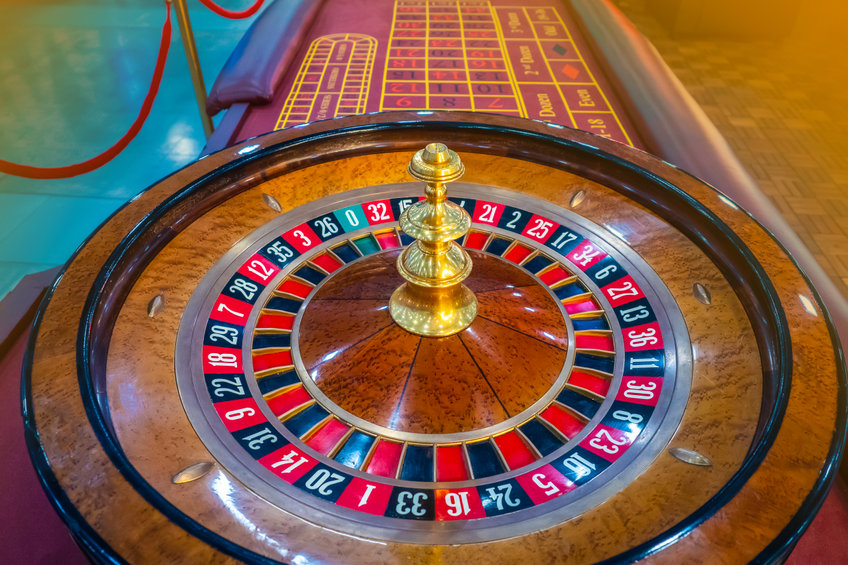The tale of slot machines is a fascinating narrative that reflects the development of amusement and wagering over the years. From their simple origins in the late 19th century to becoming a fixture in gaming halls throughout the globe, these chance games have gone through remarkable changes. Casino slots games have captivated players with their vibrant visuals, engaging concepts, and the hope of wealthy jackpots.
At first designed as physical machines with turning cylinders and a small number of images, slot machines have transformed into advanced tech-based games that feature advanced technology and interactive elements. Today, they draw in millions of players, each wanting to win big with just the yank of a switch or the tap of a button. Delving into the fascinating background of these machines reveals not just the narrative of a well-liked pastime, but also a depiction of social evolution and progress in technology over the ages.
One of the Beginnings of Slot Machines
A tale of slot machines begins in the final years of the 19th century, a time when machines were becoming popular in entertainment venues. The first true slot machine was invented by Charles Fey in 1895, referred to as the Liberty Bell. It featured 3 spinning reels and five symbols: hearts, diamonds, spades, a horseshoe, and the legendary Liberty Bell. Players pulled a lever to spin the reels, and if the symbols aligned in a particular combination, they would win a payout. Fey’s invention rapidly captured the attention of gamblers and set the foundation for future developments in casino slots games.
As the concept of the slot machine gained popularity, numerous inventors looked to enhance Fey’s design. By the dawn of the 1900s, slot machines were becoming a frequent presence in saloons and amusement parks. In 1907, the first electromechanical slot machine was introduced by Herbert Mills, which featured a more intricate system of payout mechanisms and the iconic fruit symbols that are still linked to slots today. This evolution marked a significant shift in the gaming industry, as machines became more engaging and user-friendly, attracting more players.
The popularity of slot machines remained high throughout the first half of the 20th century, resulting in their extensive use in casinos across the United States. However, as legal restrictions on gambling during the Great Depression presented challenges for the industry. Many machines were banned, but this did not halt innovators. Instead, they adapted by creating machines that dispensed candy or gum instead of cash prizes, effectively bypassing the restrictions while still offering the thrill of a casino slots game. This creativity kept the spirit of gambling intact, setting the stage for the eventual resurgence of slot machines in modern casinos.
Evolution of Casino Slot Innovation
The history of gambling machines started in the final 19th century with the debut of the initial traditional devices. Charles Fey, a San Francisco mechanic, launched the Liberty Bell in 1895, which boasted three rotating reels and five icons: hearts, diamonds, spade symbols, a horseshoe, and the Liberty Bell itself. This simple yet engaging appearance laid the basis for the progress of slot games, creating an swift draw for players searching for fun and a chance to earn.
As innovation advanced, so did the design and capabilities of gambling devices. By the central 20th era, electronic mechanical machines appeared, including electric parts to improve gameplay and amplify payout possibilities. These advancements permitted for increased sophistication features like various paylines and greater jackpots. The casinos welcomed these advances, causing the rise of slot machines as a major source of revenue within the gambling sector, radically changing the slots gaming experience.
The final 20th and beginning 21st hundred years heralded the digital revolution, resulting in the launch of digital slots. These machines replaced traditional reels with digital screens, enabling even more innovation in themes and gameplay features. Players could now experience rich graphics and sound effects, along with involving bonus rounds. The transition to internet gambling further transformed the slots experience, allowing slots reachable to a global market anytime and wherever, thus marking a new phase in the evolution of gaming machine technology.
A Cultural Influence of Slot Machines

These gaming machines have become more than just a form of entertainment; they have integrated into the essence of popular culture. Across movies and TV series to music and literature, these famous gaming machines often act as emblems of luck and risk. Films like Casino and Ocean’s 11 notably highlight slots, portraying them as thrilling yet uncertain elements of the gambling experience. Their unique attraction lies in the sound of coins falling, the spinning reels, and the vibrant flashing lights, which together create an electric atmosphere that draws people in.
Moreover, slot machines have shaped social gatherings and events, making them a centerpiece in casinos and gaming venues. Many people do not just go to a casino to gamble; they go for the entire experience, which includes the social interactions and the vibrant ambiance surrounding these machines. Special tournaments and themed gaming nights centered around these games also showcase their popularity, fostering community engagement and shared experiences among players. This community aspect has contributed to the machines’ lasting popularity. GA179
The advancement of technology has also changed this cultural impact. Digital and online slots have broadened access to these games far beyond the walls of physical casinos. Players can now enjoy their favorite casino slots game from home or on the move, leading to the rise of online communities and forums where enthusiasts exchange strategies and experiences. The ongoing innovation in game design and the inclusion of storytelling have kept the cultural significance of slot machines alive, attracting younger audiences while maintaining a tie to their historical roots.